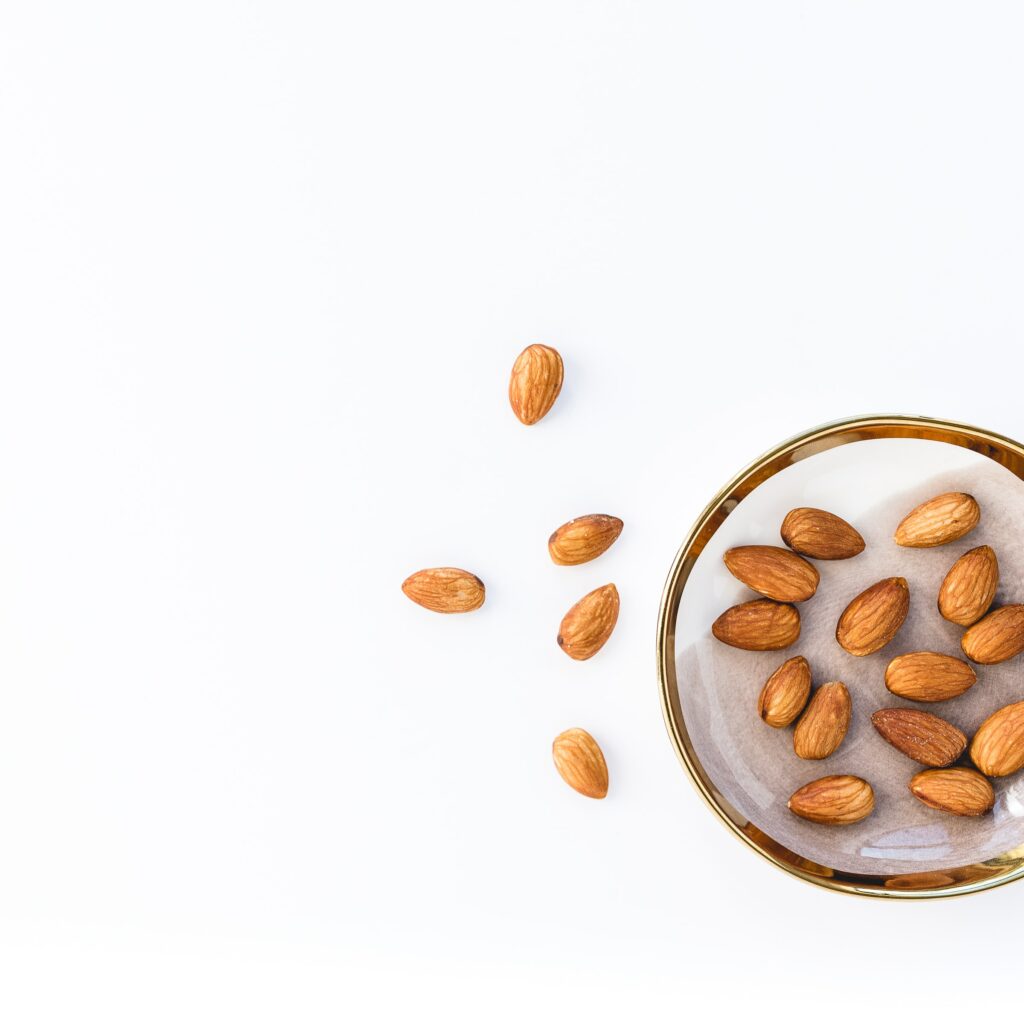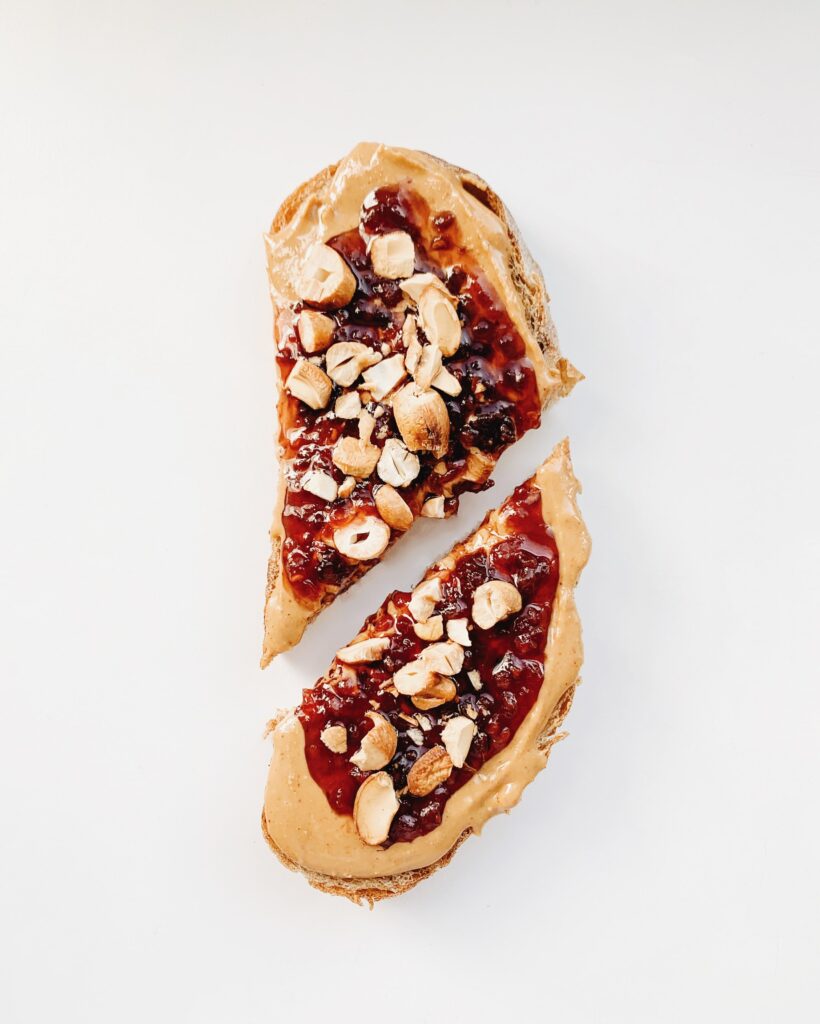Like clockwork, it’s mid-afternoon and hunger strikes. You ditch all your other tasks and head straight to the pantry. Inevitably, it’s a bit of an eyesore. You regret not organizing your cluttered, overflowing shelves. Behind the half-eaten bags of cereal and tortilla chips is a container of suspect-looking almonds. The shelf is caked with a thin layer of dust. Hoping for a miracle, you open the lid. The nuts don’t look great (at all). You let out a sigh, opt for a handful of packaged cookies, and head back to your desk. Sound familiar? If so, today I’m sharing the best way to store nuts and seeds. Don’t fall victim to rancid seeds or nuts! These storage tips will significantly extend their shelf life.

Why Nuts and Seeds Have a Limited Shelf Life
A well-stocked kitchen is my language. If you’re anything like me, nuts and seeds are household staples. They find their way into granola, chia pudding, and of course, snack-worthy breads. I often find myself in the bulk bin section of the grocery store, filling my bags with walnuts, almonds, pumpkin seeds, and hemp hearts. Unfortunately, not knowing how to store nuts and seeds can lead to food waste. They have a limited shelf life. Nuts and seeds contain a reasonably high amount of oil, and these healthy fats are delicate. When exposed to heat, light, and oxygen, they can turn rancid. This results in a harsh, bitter taste (and stomach pain).

How to Prevent Nuts and Seeds From Going Rancid
To help extend their shelf life, make sure to store your nuts and seeds properly. Below are my tips and tricks, as well as the best way to store nuts and seeds.
Opt for fresh.
When possible, buy the freshest nuts and seeds you can find. Farmers markets are great for this. Otherwise, bulk bins are often a good place to look (because they tend to have a quick turnaround and are restocked often). If possible, taste before you buy to ensure freshness. Also, try to only buy what you need.
Buy Them whole.
Raw nuts and seeds will stay fresh, the longest, when they’re whole. Once chopped, toasted, or ground into flour or meal, nuts release their oils. As mentioned, these oils are then exposed to more oxygen, which makes them go rancid more quickly. Get in the habit of toasting or grounding nuts/seeds at home. Not only does this guarantee freshness, but also your toasted walnuts, almond butter, and flaxseed meal will taste better.
Use airtight containers.
Once you return home from the store, transfer your nuts and seeds to airtight containers. Empty pasta bottles or mason jars work, too! This keeps air out—which results in fresher nuts—and prevents outside odors from getting in.
Keep them chilled.
Storing your nuts and seeds in airtight containers is the first step, but it’s even more important to keep them chilled. You’ll notice a theme with how to store nuts and seeds: the colder, the better. If you plan to use them in the immediate future, it’s fine to store the airtight containers in a cool, dark spot in your pantry. To keep them fresh for much longer, store your nuts and seeds in the refrigerator or the freezer. That way, they’ll be unaffected by fluctuating kitchen temperatures.
How do I know if my Nuts are rancid?
There are two ways to tell if something’s gone rancid: smell and taste. If something smells or tastes off, it’s rancid. Nuts should either smell like nothing…or like nuts. If they smell sour or bitter (or like anything else), they’re rancid. If you taste it and it doesn’t taste quite right, it’s rancid. Trust your instincts. One more thing to note: nuts and seeds are a bit porous. Meaning, they can absorb flavors from other ingredients around them. If you keep them in the fridge next to chopped onions or garlic, your nuts and seeds might absorb those flavors. This is where airtight containers are helpful!

Nuts and Seeds: Approximate Shelf Life
For an easy, printable guide, see below.
| NUT / SEED | PANTRY | FRIDGE | FREEZER |
| Almonds | 9 months | 1 year | 1-2 years |
| Cashews | 9 months | 1 year | 2 years |
| Walnuts | 6 months | 1 year | 2 years |
| Pecans | 6 months | 1 year | 2 years |
| Peanuts | 1 month | 4-6 months | 1 year |
| Pistachios | 3 months | 1 year | 3 years |
| Pumpkin Seeds | 3 months | 6 months | 1 year |
| Hemp Hearts | 3-4 months | 1 year | 1 year |
| Chia + Flax Seeds | 1 year (whole) | 2 years | 3-4 years |
Images courtesy of Unsplash. This article contains affiliate links. Thank you for supporting Wellness with Edie. This article is for informational purposes only. It is not, nor is it intended to be, a substitute for professional medical advice, diagnosis, or treatment and we recommend that you always consult with your healthcare provider.



Leave a Reply